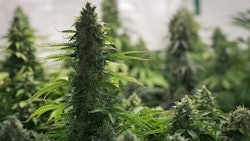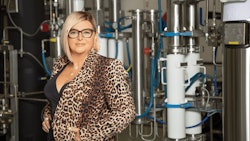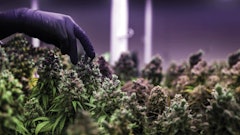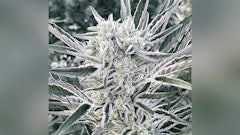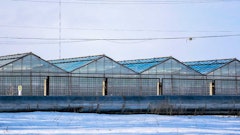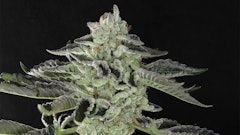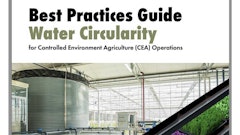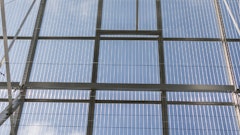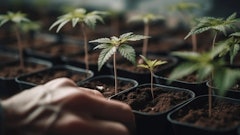
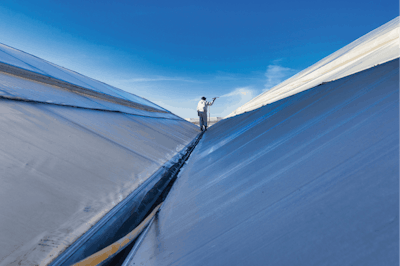
Many things can go horribly wrong in a cultivation operation. With numerous variables to account for, a grower must anticipate encountering a multitude of everyday problems, as well as unexpected events and surprises. A grower must be able to not only anticipate problems, but also be able to troubleshoot/diagnose a given problem rapidly to appropriately solve it before it becomes a bigger issue.
Each cultivation environment—whether a greenhouse, outdoor field or indoor facility—presents its own challenges. Whether you are troubleshooting problems or simply being appropriately proactive, here are common issues you may encounter in a greenhouse and tips on how to solve them. (Editor’s Note: Look for troubleshooting tips for outdoor and indoor environments in future issues.)
Troubleshooting Common Greenhouse Problems
One of the many advantages a greenhouse offers is that it utilizes both supplemental lighting as well as natural sunlight (when available), meaning greenhouse-grown cannabis typically has a lower cost of production compared to indoor without sacrificing yields or quality. Many high-value crops, ranging from ornamental flowers to tomatoes, are produced commercially in greenhouses for just that reason. Greenhouse production also allows for multiple crop cycles per year, similar to indoor production.
But, like in any controlled environment, potential problem areas exist in greenhouses that must be monitored and proactively addressed. Losing control of your environment can lead to cultivation headaches ranging from poor airflow to extreme temperatures, as well as opportunities for diseases, such as waterborne viruses like Pythium.
Common problem #1: Air filtration.
Typically, greenhouses are not sealed environments (such as hybrid facilities with glass roofs), but rather forced air/positive pressure environments. This means that they should be equipped with air filtration and sterilization capabilities on both the intake air and the exhausted air. The intake air is filtered and sterilized for pest and disease prevention. The exhaust air is filtered, neutralized, and/or sterilized to mitigate problematic odors.
In California and other fire-prone areas, I predict the ash and smoke produced by wildfires will force greenhouse growers to closely examine their air intake systems so that whatever threat from the smoke and ash gets minimized, but preferably eliminated.
That smoke and ash is not just wood, but plastics, rubber, and metals from homes and cars being burnt in wildfires, all of which can reduce quality and increases the risk of cannabis not passing contaminant testing (for more on this, see: bit.ly/cannabis-testing-smoke-damage). For insights into the potential economic impacts of smoke and ash damage to cannabis, look no further than the grape industry, where many California vineyards are leaving grapes on the vine and foregoing the 2020 harvest in the hopes of collecting insurance payouts due to “smoke taint.”
HEPA filtration or alternative filtration methods must be employed to minimize, if not eliminate, the possibility of either ash entering the greenhouse ventilation system or clogging filters. High levels of smoke may require that ventilation be minimized or adapted to accommodate airflow without filling the greenhouse with smoke. A proper ventilation system also allows a grower to control vapor pressure deficit (VPD) to some degree.
The main sign of clogged air filters is decreased airflow. Greenhouse operators can use wind speed sensors to determine if airflow is reduced. Larger automated ventilation systems often come with sensors that alert cultivators when it’s time to swap out filters. That said, air filters should be inspected periodically and changed as required. Location of the operation will determine how often filters need to be changed—don’t rely solely on manufacturer recommendations on when to change the filters because each situation is different.
Common problem #2: Greenhouse temperature swings.
The summer of 2020 delivered record temperatures to all of California, including both the southern and northern regions. In Southern California, Death Valley reached 130 degrees, which is the hottest recorded in nearly 90 years. In other parts of the state, radiant temperatures (which is defined as net radiant heat gain or heat loss, and is different than ambient temperature), amplified by wildfires and smoke, reached 120 degrees in September.
With such extreme environmental temperatures, one possible recourse that doesn’t require increasing air conditioning capacity is to use either shade cloth or a greenhouse whitewash to control excessively hot environmental conditions, both ambient temperatures as well as radiant temperature.
A whitewash consists of coating the greenhouse glass with one or more coats of non-permanent, white, washable paint. Operations that use automated glass cleaning machines can fill those systems with whitewash instead of a cleaning solution. Some larger scale operations can also apply whitewash by helicopter.
While the goal of whitewashing is to reduce radiant temperatures, it also impacts the amount of photosynthetically active radiation (PAR) light reaching the crop. If light levels drop below target levels, consider washing off the paint and applying fewer coats or a more diluted paint mix. Ultimately, growers must weigh the risks of heat exposure against loss of light when determining how much light and radiant heat they want to take out of the greenhouse.
Shade cloth comes in a multitude of configurations; it offers various percentages of shading capabilities (e.g., 10%, 20% or 30% shading, meaning the cloth will block that amount of light from entering the greenhouse).
Like whitewashing, shade cloths do reduce the amount of light that reaches the crops. Thankfully, shade cloths can be pulled up during peak sunshine hours and removed as the sun sets to minimize the loss of light while maximizing the reduction of radiant heat.
In colder climates, a heating system is a must. An inefficient heating system can be expensive at best and dangerous at worst. If growers are experiencing cold spots in the greenhouse or lower temperatures overall, and inspections for leaks and gaps where cold air could be infiltrating have been conducted, the heating system might be at fault. Early spring is the best time to thoroughly inspect and repair any heating systems. All heating equipment and thermostats should be serviced and inspected prior to wintertime use—it’s better to prevent a problem in the fall than respond to one in the dead of winter.
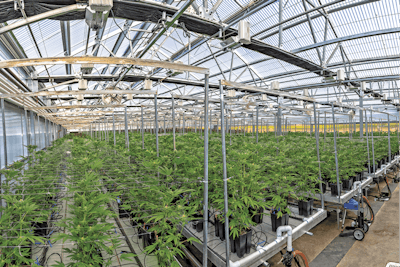
Common problem #3: Watering and fertigation systems.
After harvest and in between crop cycles is the perfect time to troubleshoot and repair/replace any and all worn out, broken or defective irrigation or fertigation equipment.
Measure the flow rate to determine whether a fertigation system is functioning properly. Ideally, growers will have a baseline that was first measured after the system was installed against which to compare. Diminished flow could be a sign of a clogged filter, dripper, or dose meters. Wilting plants are an obvious sign of a potential irrigation problem. For automated irrigation systems, however, a computer should tell growers there’s a problem before it is even noticeable in the plants.
If flow rate is reduced, growers can flush the irrigation system with a hydrogen peroxide and water mix. Use a mix of up to five parts water to one part hydrogen peroxide when flushing systems. For preventative treatment, this can be done between each harvest.
Also, growers should verify each dripper by hand to make sure there are no clogs that were not unplugged by the peroxide cleaning solution.
Common problem #4: Constant mold and pest problems.
Besides the overall function of the watering/fertigation system, close attention to disinfection is a major priority. Pythium and other vectors for disease can be transmitted by contaminated irrigation equipment and/or contaminated water. If growers are experiencing continued Pythium problems over multiple crop cycles, consider decontaminating the entire watering system, including lines and the water tank (if a water tank is used). Again, in ideal situations, this should be done after each harvest.
The same water and hydrogen peroxide mix can be used to disinfect water tanks and irrigation lines. For perpetual harvest systems, growers can clean bays/rooms in sections as they pull down plants. Growers can schedule a water tank disinfection after a watering cycle, when the tank will be mostly empty, and fill the tank with the 20% concentrated solution.
If the watering system is sanitized but mold and pest issues persist, it might be time to deep clean the greenhouse. Using a more diluted hydrogen peroxide solution of 10 parts water to one part hydrogen peroxide (or another organic cleaning agent), scrub the floors in all cultivation, drying, curing, and foot traffic areas. Besides the walls, ceiling, grow room floors and hallways, decontaminate the air intake system, preferably at the same time as air filtration is changed or maintained in between crop cycles.
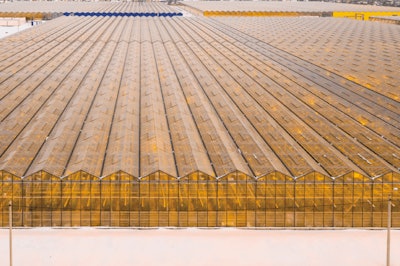
Common problem #5: EC/nutrient level spikes.
If there are noticeable spikes in nutrient solution electrical conductivity (EC) (which growers would notice in runoff testing) but levels are normal at the solution source, consider examining the fertigation lines, as fertilizer salts may have accumulated. Also, thoroughly inspect nutrient application equipment such as injectors for EC and flow rate to prevent under/over fertilization issues from metastasizing and causing nutrient application problems.
Common problem #6: Crops drying out.
If crops seem consistently dehydrated, inspect all related electronic controls responsible for watering, timing and cycles for clogs or mechanical failures to prevent possible over/under watering or not watering on time.
Thinking proactively about the potential problems that a greenhouse can face, and planning on how to avoid or address those problems, is going to be the difference between a humming operation and a wasted investment. With that in mind, develop SOPs that not only direct team members on how to do things right, but what to do when things go wrong.








